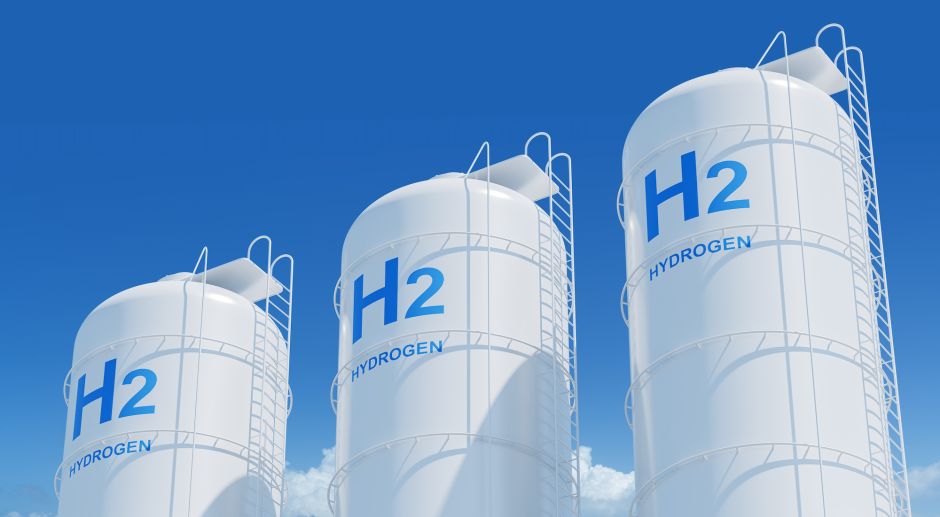New concept for hydrogen bunkering tested successfully

When the next generation of hydrogen-powered ferries in Gotland will be bunkered with hydrogen, the temperature in the ship’s storage tanks will exceed the allowed limits unless the gas is cooled. A concept where the gas is cooled using seawater was developed last year. The technology has now been successfully tested in a project funded by the Swedish Transport Administration.
When gas is compressed in a cylinder, the temperature rises as the pressure increases. Hydrogen also has the special property of warming up when it expands, which happens when it is transferred from a high-pressure tank to one with lower pressure. This means that two effects work together to increase the temperature, causing the hydrogen to quickly exceed the allowed 80°C limit in the cylinders on a ship.
The hydrogen therefore needs to be cooled. On the road side, the problem has been solved by cooling the hydrogen to -40°C before refueling vehicles. But cooling 50 kilograms of hydrogen to fuel a truck is one thing, cooling 16 tons to fill a ferry is something entirely different. Doing so before bunkering would require large amounts of energy and possibly an expensive air separation plant. Therefore, researchers at KTH and Uppsala University were challenged to think outside the box when, in a project funded by Lighthouse, they developed a new concept for active cooling.
By allowing seawater to flow through a heat exchanger in each cylinder onboard the ship, the hydrogen could be cooled. Only 10-degree water, which is available year-round in Visby harbor, would be enough to bring the temperature in the cylinders to somewhere between 40 and 60°C – a level well within the allowed limits.
However, it's not certain that something that works in theory will work in practice. In a follow-up project funded by the Swedish Transport Administration, a prototype tank with an internal cooling loop was built at RISE Composites in Piteå and tested at RISE Fire Research AS in Norway.
"The results were definitely promising and showed that it is possible to cool the gas using seawater," says Jonatan Gehandler at RISE, who led the test project.
The prototype tank passed both pressure and performance tests without leaks or visible damage, and the temperature increase was reduced during hydrogen filling, allowing for a higher fill level and safe use.
"However, in all tests, the heat loss was lower than in the earlier models. This was partly because the tank was built with steel liners inside, which absorb a lot of heat. A tank solution completely based on carbon fiber, or possibly with plastic liners (type-IV), might have been better, but it is complicated to build with a cooling loop inside."
"Then there is also the cost issue. It is obvious that designing this type of tanks will be expensive. However, we did not investigate the economic aspect in this project," says Jonatan Gehandler.
According to the researchers, there are still several open questions regarding large-scale bunkering that need further investigation. In their report, they recommend the following:
- A detailed design of a large-scale bunkering system for ships should be developed.
- The thermodynamic model needs to be refined to include all components of a large-scale bunkering station.
- It should be investigated how efficient cooling can be achieved between the expansion valve and the tanks onboard in larger mass flows and realistic pipe and hose dimensions (to cool off the Joule-Thomson effect).
- It should also be examined how the impact of reduced heat losses in the tank, such as through the use of plastic liners, thinner metal liners, or a fully composite tank, as well as a larger tank volume and mass flow, affects the system.
The report Safe Large-Scale Hydrogen Bunkering – Testing and Validation was written by Mikael Bergius, David Engberg, Stefan Grönkvist, Kumail Marnate (KTH), Vasiola Zhaka, Björn Samuelsson (Uppsala University), and Jonatan Gehandler (RISE).
-
 NextWave – en podd som ska locka unga
NextWave – en podd som ska locka unga -
 Ny studie: Eldrivna pendelbåtar kan effektivisera Stockholms kollektivtrafik
Ny studie: Eldrivna pendelbåtar kan effektivisera Stockholms kollektivtrafik -
 Sjöfartens utsläpp ökar
Sjöfartens utsläpp ökar -
 Sociala relationer påverkar val av bränsle
Sociala relationer påverkar val av bränsle -
 Sjöfartens omställning kräver ”mjukare” påtryckningar
Sjöfartens omställning kräver ”mjukare” påtryckningar -
 Hon hade avtalad tid med Kapten ynkrygg
Hon hade avtalad tid med Kapten ynkrygg -
 Lighthouse omvärldsanalys 2025 – osäkerhet och tullar präglar sjöfarten
Lighthouse omvärldsanalys 2025 – osäkerhet och tullar präglar sjöfarten -
 Se seminariet Shipping in the Marine Environment
Se seminariet Shipping in the Marine Environment -
 Vad betyder egentligen de 90 procenten?
Vad betyder egentligen de 90 procenten? -
 Hålla där...
Hålla där...

